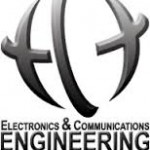- This topic has 25 replies, 13 voices, and was last updated 9 years, 5 months ago by
 Karan Ahuja.
Karan Ahuja.
-
AuthorPosts
-
-
April 5, 2016 at 11:50 am #35672
 Naazira BadarParticipant
Naazira BadarParticipantHi all.
I have a query about the LP Bessel or any other low pass filter that we use at the receiver in our systems. what exactly is their role in the optical system? Actually for homodyne and heterodyne receivers, the LPF have different functions. Could anybody give me a response please?thanking in anticipation.
Best Wishes
Naazira Badar -
April 5, 2016 at 1:57 pm #35691
Atul Sharma
ParticipantHello Naazira. Greetings from my side.
As name suggests the filters pass the components of the signal both in optical domain and in electrical domain. What exactly is the issue you are facing with your system. Is it related to the filters?
Looking forward to hear you.With regards
Atul Sharma -
April 5, 2016 at 2:21 pm #35703
 SAHIL SINGHParticipant
SAHIL SINGHParticipantHi Naazira,
Its pretty rightly figured by out by Atul that the filters pass the components both in the opticalas well as electrical domain… Please elaborate a bit on your query..
Regards
Sahil Singh -
April 5, 2016 at 2:51 pm #35729
 Ranjeet KumarParticipant
Ranjeet KumarParticipantHello Naazira ma’m
As we know that Low pass filter is used at demodulator or receivers. Before sending the data through medium, we modulate the data by using carrier frequency (laser frequency) so modulated data have very high frequency components. hence we need to demodulate the data to low frequency.
LPF removes high frequency components from transmitted signals.-
April 6, 2016 at 1:53 am #35809
Atul Sharma
ParticipantHi All. Greetings.
yes ranjeet that is what low pass filters do. The high frequency components which may be the interference or the noise get filtered because only low pass components are allowed to pass through. You have put it rightly. But lets see what the exact problem naazira is facing with.
With regards
Atul sharma
-
-
April 5, 2016 at 3:09 pm #35741
Ubaid Bhat
Participanthi naazira badar…
well the name itself suggests that the filter will allow the frequencies which are within the passband of the low pass filter and will filter the frequencies which are above the cutoff frequency. As the information is available only on lower frequencies which are used to modulate the carrier which is a very high frequency, so we need to filter the high frequencies and only pass the low frequencies at the receiver side.hope you got my point
with regards
ubaid bhat-
April 6, 2016 at 1:55 am #35810
Atul Sharma
ParticipantHello Ubaid . Greetings.
you have correctly mentioned it and that is what low pass filters do. The high frequency components which may be the interference or the noise get filtered because only low pass components are allowed to pass through. You have put it rightly. But lets see what the exact problem naazira is facing with.
With regards
Atul sharma
-
-
April 5, 2016 at 3:13 pm #35742
Ubaid Bhat
ParticipantAlso the noise which gets introduced into the system are usually high frequencies needed to be filtered can be done with low pass filter only. so the low pass filter is a very important device on the receiver side for better reception of the signal.hope you got my point.
with regards
ubaid bhat -
April 5, 2016 at 4:17 pm #35760
 Ranjeet KumarParticipant
Ranjeet KumarParticipantYeah Ubaid, Share a very good.
LPF also removes noise and interference which gets mixed with signal during its transmission through medium needs to be removed.
Hence LPF is a very important components at receiver ends, Its type may vary according to its applications and type of receivers.-
April 6, 2016 at 1:56 am #35811
Atul Sharma
Participantyes ranjeet rightly so.everyone has put a valid point here but as i mentioned lets wait and see what the exact problem naazira is facing with.
With regards
Atul sharma
-
-
April 6, 2016 at 4:24 am #35831
 Dr. Dhiman KakatiParticipant
Dr. Dhiman KakatiParticipantHi Naazira Badar,
You have mentioned that at the demodulator you are using the Low pass filter, If I am correct the low pass filter in Electrical domain is used for rejecting the high frequency components because optical up-conversion is going there so there remains some high frequency components at the output of the receiver. Thanking you.Regards,
Dhiman-
April 6, 2016 at 6:38 am #35850
Atul Sharma
ParticipantHi Dhiman. Greetings.
You have mentioned an important point here. It is worth noting this point.
Thank you for sharing it.With Regards
Atul Sharma
-
-
April 6, 2016 at 3:57 pm #35941
 varinder singhParticipant
varinder singhParticipanthelo naazira..
first of all thanks for sharing your problem on optiwave forums..from my point of view i think lpf filters mostly commnly used for demodulation purpose in communication sytem..but laser light or optical light frequency can be used as carrier frequency for modulation..so mostly we are using lpf at the receiver end..and bessel filter are mostly commnly used for frequency modulation…or in wideband fm.
if you require more information about this topic ..then use sanjay sharma.. it will help you..
with regards -
April 6, 2016 at 4:10 pm #35944
 SAHIL SINGHParticipant
SAHIL SINGHParticipantHi Virender,
I agree with your view that low pass filters are used for the purpose of demodulation… Can you please tell me What do you mean by Sanjay Sharma ? Hope to hear from you..
Regards
SAHIL SINGH -
April 6, 2016 at 4:13 pm #35945
 varinder singhParticipant
varinder singhParticipanthelo ..sahil..
i mean if she want information about bessel filter and lpf …then for that she must use that book..
i read that book during my btech days..
nothing more.
with regards -
April 7, 2016 at 12:21 am #35958
 Jojo MathewParticipant
Jojo MathewParticipantHello Varinder Singh, Bessel’s function is just a technique that is mostly used for solving the functions that contain a trignometric function within same or different trignometric function…as an example: f=cos(2*3.14sin(2*3.14x))…In your case, you are using Bessel’s function as a Low pass Filter. Mathematically, the various frequency components that are present in the function in the lower range will be allowed to pass. If you derive the mathematical equation or formula for the Bessel’s filter that you are using will be in the form as: Y= f(cos(sin(x)).
regards
-
May 3, 2016 at 7:43 pm #38805
 Rajguru M. MohanParticipant
Rajguru M. MohanParticipantHi Naazira,
You can see the difference between homodyne and heterodyne receivers, in terms of filters,
In heterodyne we have band pass filters while in homodyne we have low pass filter.Thanks,
-
May 9, 2016 at 10:19 am #39032
 Naazira BadarParticipant
Naazira BadarParticipantHi all..
Thanks a lot
.. for all your replies.Actually in homodyne and heterodyne optical receivers, the purpose of low pass filters is different.
Discussing that was the motive of my query.Best Wishes
Naazira Badar -
May 9, 2016 at 12:46 pm #39041
 burhan num mina llahParticipant
burhan num mina llahParticipantHello Naazira,
What exactly is the function of low pass filters there? I would like to know the difference between the two scenarios.
Regards
Burhan -
May 10, 2016 at 5:07 am #39053
 Hamza Ali Abbas KhanParticipant
Hamza Ali Abbas KhanParticipantHello Naazira,
As far as i understand your query is about the functionality of low pass filter in homodyne and heterodyne optical receivers. I am providing a link which may be helpful to you. You may go through it for further information.
https://www.copilot.caltech.edu/documents/248-ieee_jqe_shapiro_quantum_and_excess_noise_homodyne_heterodyne_receivers_1985.pdfIt mentions about a parallel development of the semi classical and quantum statistics of multi spatiotemporal mode diiect, homodyne, and heterodyne detection using an ideal (except for its subunity quantum efficiency) photon detector is presented. Particular emphasis is placed
on the latter two coherent detection configurations. The primary intent is to delineate the semiclassical theory’s regime of validity and to
show, within this regime of validity, how the quantum theory’s signal quantum noise, local oscillator quantum noise, the quantum noise
incurred because of subuhity detector quantum efficiency, plus (for heterodyning only) image bafid quantum noise produce the quantitative
equivalent of the semiclassical theory’s local oscillator shot noise. The effects of classical fluctuations on the local oscillator, and the
recently suggested dual-detector arrangement for suppressing these fluctuations, are treated. It is shown that previous studies of this arrangement have neglected a potentially significant noise contribution.
I hope this will help.Thanks
-
May 10, 2016 at 6:46 am #39059
 Naazira BadarParticipant
Naazira BadarParticipantHi Burhan num mina llah and Hamza Ali Abbas Khan..
thankyou for replying yet again.
My query revolved the basic idea that in homodyne receivers, low pass filters are responsible for noise reduction and pulse shaping.
However, in heteroyune receiver circuits, low pass filters are responsible for suppression of unwanted demodulation products.I hope i am clear.
best wishes
Naazira Badar -
May 10, 2016 at 11:57 pm #39071
 Aabid BabaParticipant
Aabid BabaParticipantHello Naazira,
Thank you for sharing this valuable information. It is an important note that you pointed out about the low pass bessel filters being able to shape pulses. I would like to know if you are referring to shaping of optical pulses or the pulses in electrical domain. I would appreciate your response. Thanking in advance.Regards
-
May 11, 2016 at 12:53 am #39086
 Hamza Ali Abbas KhanParticipant
Hamza Ali Abbas KhanParticipantHi Naazira.
Thanks for sharing the link. It was helpful.
-
June 27, 2016 at 2:12 am #40822
 Karan AhujaSpectator
Karan AhujaSpectatorHi Naazira.
I want to mention that heterodyne detection is a process of mixing two signals. For astronomical detection, a stellar signal is combined, or mixed with a stable, fixed-frequency signal (the “local oscillator”) onto a nonlinear detector; the frequency of the local oscillator (LO) is chosen to lie at the center of the band to be detected in the source. The multiplication of these two signals produces a detector response which contains frequencies equal to the sum and difference of the two input frequencies, while preserving the amplitude and phase information contained in the original stellar signal. Typically the difference frequency between the stellar and local oscillator signal frequencies (termed the intermediate frequency) is that which is desired because of the often greater flexibility of handling a relatively lower frequency signal. The heterodyne frequency conversion technique is particularly well-suited for detection of thermal infrared radiation, i.e. frequencies on the order of tens of THz. A mid-infrared stellar signal collected by a telescope may then be spatially mixed with radiation from a laser (which serves as the local oscillator), onto a photodiode which serves as the nonlinear (square law) detector. Intermediate frequencies on the order of GHz are typically obtained, and standard radio techniques are utilized for amplification, transmission,
filtering, recording, etc.
I hope this will help. I will attach links of few papers here. You may refer to these
http://www.rfwireless-world.com/Terminology/heterodyne-receiver-versus-homodyne-receiver.html
https://www.google.co.in/url?sa=t&rct=j&q=&esrc=s&source=web&cd=4&cad=rja&uact=8&ved=0ahUKEwiah92ixcfNAhUGLpQKHXQYD4oQFggyMAM&url=http%3A%2F%2Fwww.hep.ucl.ac.uk%2F~liapine%2Fpart_three_analog_signal_processing.doc&usg=AFQjCNE8rzEAAWa21wNUEOJPB-WYfdIONQ&bvm=bv.125596728,d.dGo
http://www.edaboard.com/thread88222.htmlThanks
-
June 27, 2016 at 2:15 am #40823
 Karan AhujaSpectator
Karan AhujaSpectatorI want to add that Heterodyne receivers are typically characterized by their effective bandwidth and detection efficiency. The detectors themselves exhibit an intermediate frequency resistive-capacitive (RC) time response which is characteristic of the detector construction. Because the intermediate frequency (IF) signal is then amplified, the frequency response of electronic circuits must also be factored into the overall response of the system. The combined frequency response of detector and electronics determines the total effective bandwidth. Effective detection efficiency accounts for not only the quantum efficiency of the detector, but also other factors such as net transmission efficiency of the atmosphere and telescope optics. At present, 11 µm heterodyne receivers have (double sideband) bandwidths of nearly 6 GHz (0.2 cm-1), and net efficiencies of about 30%, which accounts for quantum efficiencies of approximately 40-50% and transmission efficiencies of ~ 60% from star to detector. Larger bandwidths (~ 1 cm-1) and higher quantum efficiencies (~ 80%) may possibly be realized with quantum-well infrared photodetector (QWIP) devices, but these have yet to be proven in the application of astronomical heterodyne detection.
You may refer to:
http://www.seas.ucla.edu/brweb/papers/Journals/RTCAS97.pdf
http://www-ee.stanford.edu/~jmk/pubs/mod.and.det.tech.COTA.6-06.pdf
-
-
June 27, 2016 at 2:17 am #40824
 Karan AhujaSpectator
Karan AhujaSpectatorA heterodyne receiver designed for detection of stellar mid-infrared signals has been constructed as follows. Collection of light from an astronomical source is performed with a 1.65m aperture telescope of effective focal length f/89. A few centimeters beyond the focal point, the telescope beam is split into two parts by a dichroic beamsplitter which sends mid-infrared (N band) radiation on to the heterodyne detection system, and near-infrared (K band) radiation on to a camera for guiding and tip/tilt wavefront correction. Because the atmospheric index of refraction does not change significantly between the K and N bands, wavefront correction in the near-infrared is adequate to stabilize the mid-infrared signal. The mid-infrared stellar beam reflected off of the dichroic beamsplitter is then sent to a beamsplitter where it is combined with light from a CO2 laser (which has been properly shaped by a series of lenses in order to ensure the laser and telescope beams are of the same f-number). The combined beams propagate to a mirror which reflects the beam into a signal detection dewar through an antireflection (AR) coated f/1.5 aspheric ZnSe lens and an AR coated ZnSe window tilted at 5° from normal incidence to the optical axis in order to prevent backreflections.
http://www.ijraset.com/fileserve.php?FID=94
https://www.google.co.in/url?sa=t&rct=j&q=&esrc=s&source=web&cd=7&cad=rja&uact=8&ved=0ahUKEwjEk861xcfNAhWJp5QKHSHCAi8QFghSMAY&url=http%3A%2F%2Fisi.ssl.berkeley.edu%2Fpapers%2FhaleTDW2003.pdf&usg=AFQjCNEvhtp_LmIfqB8cKGz_fdbz30Kmpg&bvm=bv.125596728,d.dGoThanks
-
-
AuthorPosts
- You must be logged in to reply to this topic.

